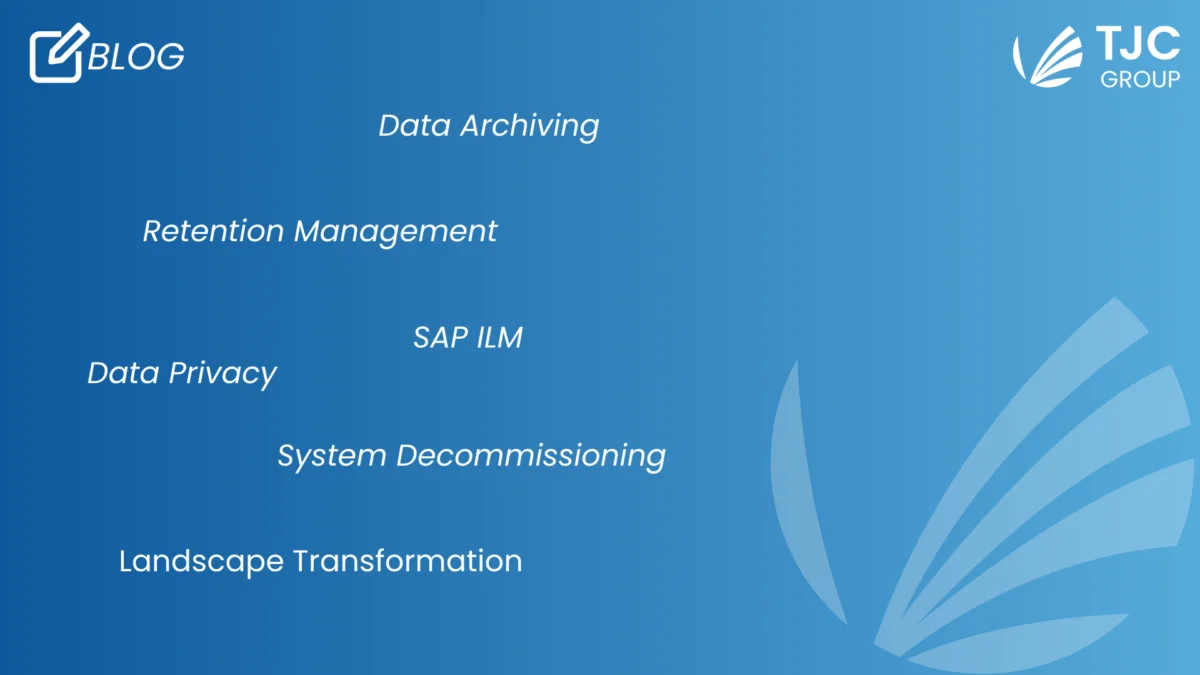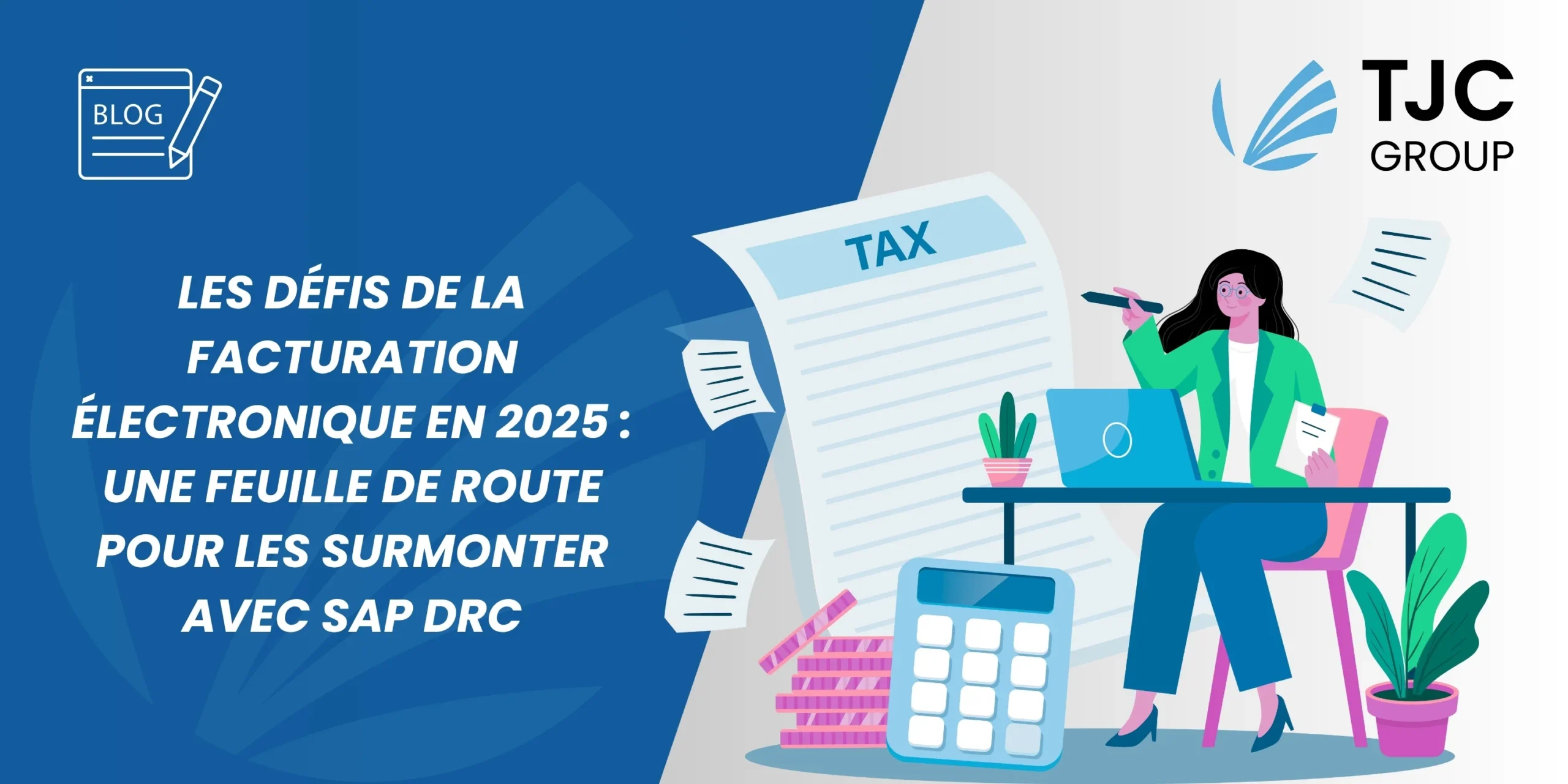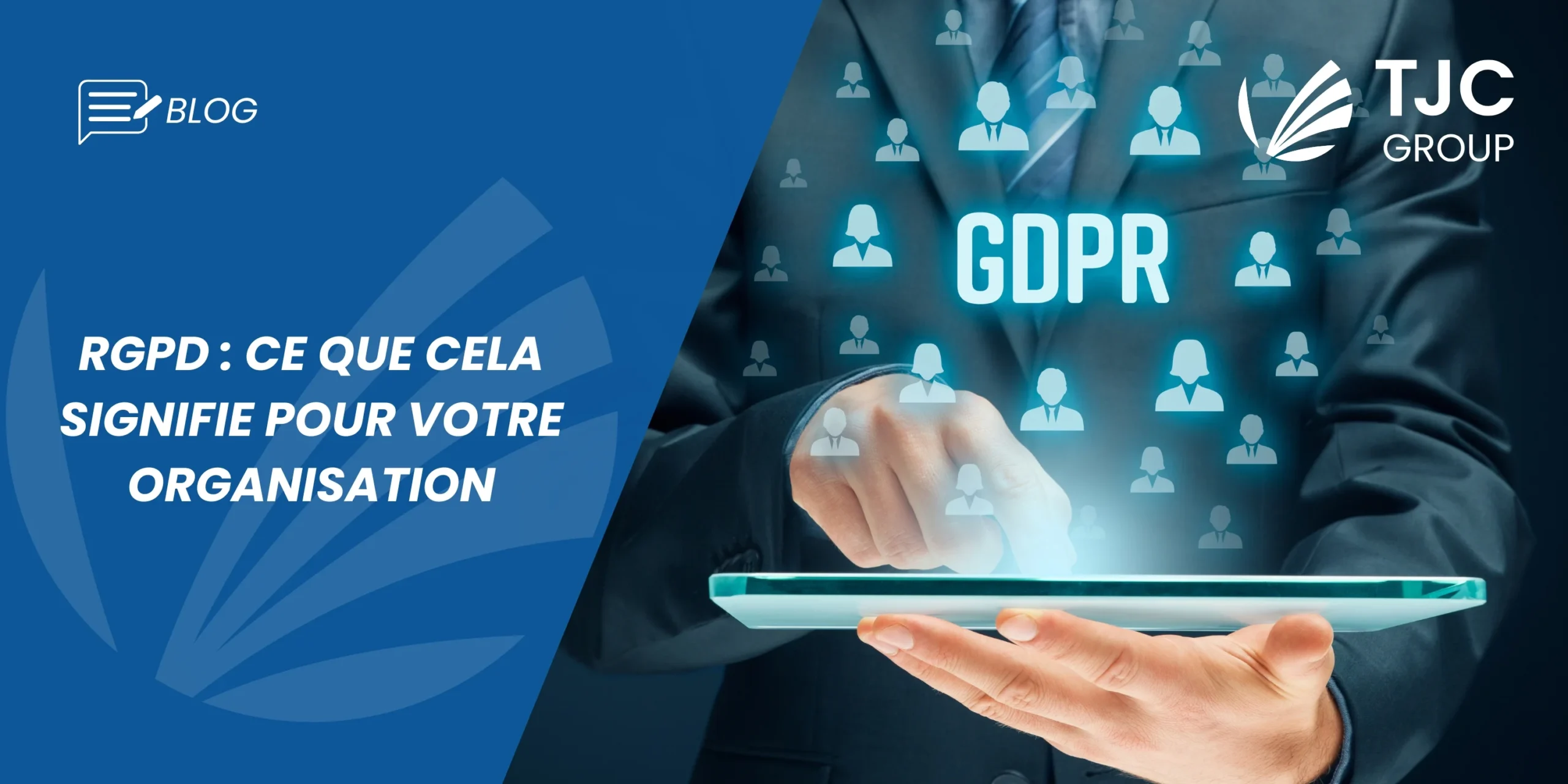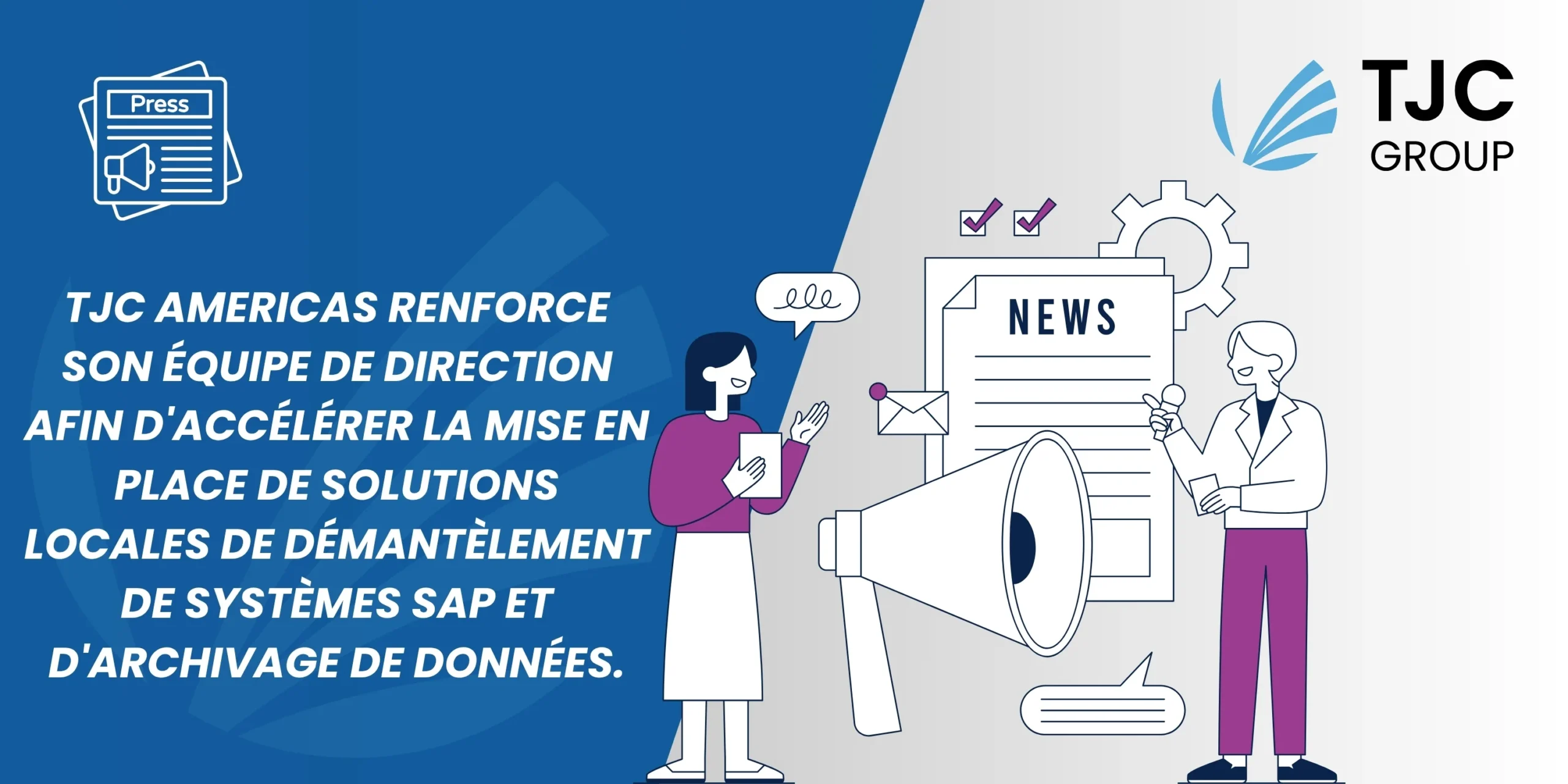Auteurs : Olivier Simonet, VP Ventes et Marketing chez TJC Group | Laura Parri Royo, Directrice Marketing chez TJC Group
Cet article explique les différences entre les termes clés de la gestion des volumes de données, tels que le décommissionnement des systèmes, l’archivage des données, la gestion de la conservation et l’harmonisation de l’environnement SAP. Vous pensez peut-être qu’ils sont tous équivalents, mais ce n’est pas le cas. Testez votre compréhension : connaissez-vous la différence ?
Table des matières
Introduction
Alors que les volumes de données augmentent de façon exponentielle, de nombreuses organisations constatent que les coûts du stockage en nuage échappent à tout contrôle. Ce qui était autrefois considéré comme peu coûteux devient aujourd’hui une charge importante, mais ce n’est pas une fatalité. Si vous savez comment tirer parti de l’archivage et de la suppression automatisés des données et si vous comprenez bien ce que cela implique, ces coûts peuvent être réduits de manière significative.
L’un des moyens de maîtriser durablement la croissance du volume de données dans les systèmes SAP consiste à entreprendre un programme SAP Information Lifecycle Management (ILM) et à ne jamais payer que pour les données que votre entreprise a réellement besoin de conserver. Si votre entreprise migre vers SAP S/4 HANA, la gestion de la croissance des données est essentielle pour réduire le coût total de possession.
2. Explication des terminologies clés
Il est important d’apprécier les différences subtiles entre l’archivage des données, la gestion de la conservation, le déclassement des systèmes et l’harmonisation du paysage. Pourquoi? Parce que cela peut faire la différence entre la conformité et la non-conformité, en particulier lorsqu’il s’agit d’adhérer aux réglementations relatives à la protection de la vie privée. Examinons-les en détail.
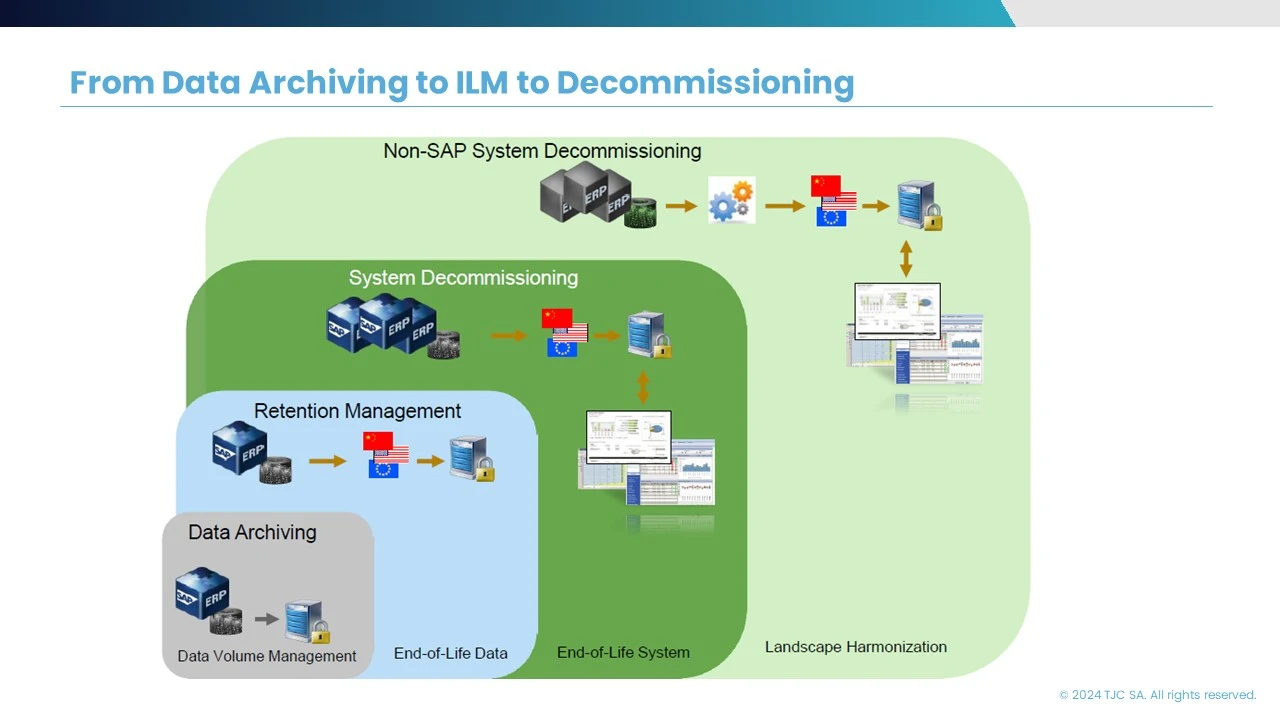
3. Archivage des données
L’archivage des données est un processus général de gestion informatique que tout propriétaire de données devrait envisager. Il est généralement utilisé pour les données rarement consultées, mais qui doivent être conservées pour des raisons juridiques ou commerciales. Les données généralement archivées se trouvent dans les tables les plus importantes qui alimentent les objets d’archivage, par exemple : les commandes clients, les bons de commande, les factures, les bons de livraison et les enregistrements des clients, entre autres.
Plus d’informations sur le sujet : voici les 6 raisons d’adopter l’archivage régulier des données dans les systèmes SAP
Dans SAP, l’archivage des données consiste à déplacer les données contenues dans la base de données SAP principale vers un emplacement distinct, tel que le système de fichiers du client (qui est généralement moins coûteux), parce qu’elles ne sont plus nécessaires dans le système principal. Les données archivées sont toujours disponibles pour être récupérées et analysées en cas de besoin à l’aide d’outils et de rapports spéciaux dans SAP, mais elles ne sont plus stockées dans la base de données SAP active. C’est un peu comme si vous rangiez les objets que vous n’utilisez pas et que vous les stockiez dans le grenier – ils seront disponibles si vous en avez besoin à l’avenir. Ce processus peut être automatisé grâce à l’Archiving Sessions Cockpit (ASC ), un logiciel développé par TJC Group qui facilite le nettoyage des données et l’automatisation des sessions de rangement en cours.
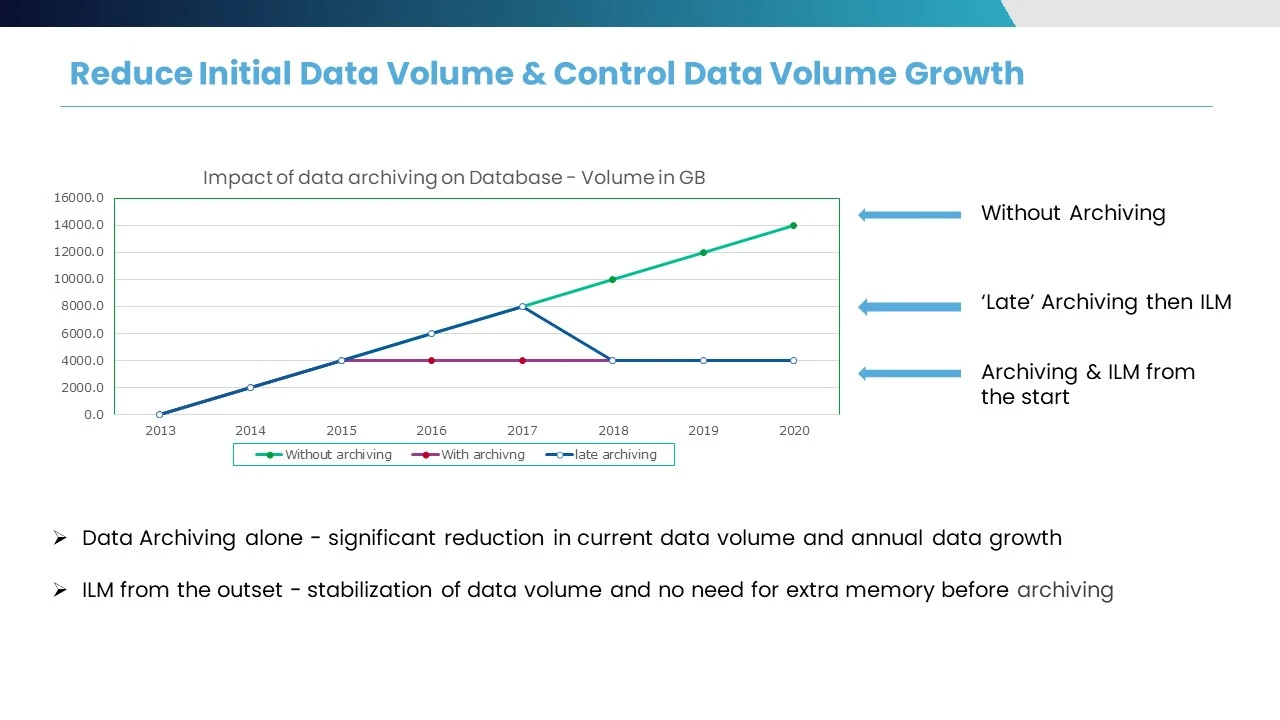
Voici ce que le Cockpit Sessions d’Archivage a apporté à Chereau, une multinationale française spécialisée dans les camions et remorques frigorifiques. Lisez l’étude de cas Chereau sur l’archivage des données SAP.
Un désencombrement régulier à la maison permet de conserver un espace de vie clair et ordonné. Cela vous permet d’être plus efficace, de penser clairement et d’être productif. La même logique s’applique aux bases de données. L’archivage des données permet de libérer de l’espace dans la base de données SAP et d’améliorer les performances du système.
Ceci est très avantageux pour les utilisateurs et leur permet de gérer la croissance de leurs systèmes SAP au fil du temps. Le processus de suppression des données des bases de données SAP vers les fichiers d’archive s’effectue dans l’environnement SAP et n’implique pas la suppression physique des fichiers archivés. Il s’agit là d’une distinction très importante. L’archivage n’est pas la même chose que la suppression.
Alors que de plus en plus d’entreprises migrent vers SAP S/4 HANA, l’archivage régulier et automatisé réduit considérablement les coûts de possession liés à l’utilisation d’une base de données en mémoire. C’est pourquoi il est important de procéder à l’archivage des données lors de la migration vers S/4HANA.
4. Gestion de la rétention (archivage SAP ILM ou RGPD)
La gestion de la conservation est une activité supplémentaire qui peut être entreprise après l’archivage des données et elle est spécifiquement associée aux lois sur la confidentialité des données, telles que la conformité au RGPD en Europe, à la Loi 25 au Canada ou au CCPA en Californie. Parfois appelée archivage SAP ILM, la gestion de la rétention implique un processus de ménage similaire à l’archivage régulier des données, mais il y a des distinctions très importantes à apprécier.
Composant SAP ILM est une solution fournie par SAP pour gérer le cycle de vie complet des données de manière structurée, automatisée et conforme. SAP ILM prend en charge la définition et la mise en œuvre de politiques de conservation, permettant la destruction des données. Les données qui ne sont plus nécessaires pour les besoins de l’entreprise ou pour se conformer aux lois sur la confidentialité des données peuvent être supprimées. De même, certaines données doivent parfois être supprimées pour se conformer aux lois sur la protection des données.
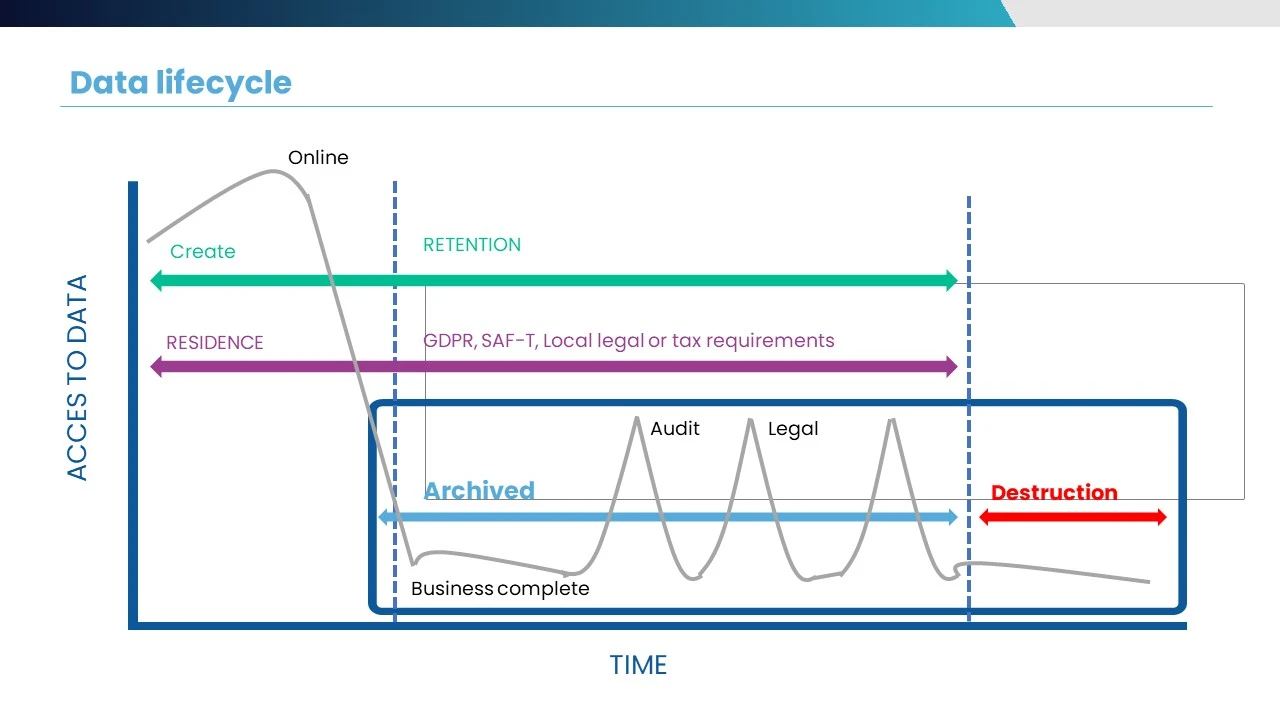
Pour en savoir plus sur SAP ILM, consultez cet article : Comprendre les principaux composants de SAP Information Lifecycle Management (ILM).
4.1 Le rôle du RGPD et des autres lois sur la confidentialité des données
Les réglementations du RGPD stipulent que les données ne peuvent être conservées que soit pour la durée nécessaire, soit pour une durée déterminée, qui varie en fonction du type d’industrie. Une entreprise peut avoir besoin de conserver ses informations pendant une période plus longue en cas d’éventuels contrôles fiscaux futurs, par exemple. Cela peut créer un conflit et l’entreprise devient réticente à supprimer les données ; cependant, dans certains cas, elle doit les supprimer pour rester en conformité.
La gestion de la rétention dans SAP résout ce problème. Les données à supprimer sont archivées et sauvegardées dans un fichier séparé, bloqué et inaccessible aux utilisateurs. Elles y sont conservées jusqu’à ce qu’elles puissent être supprimées une fois le délai de conservation atteint. Les délais de conservation sont convenus au début du projet et sont généralement définis par le délégué à la protection des données. Si le propriétaire des données a besoin d’y accéder pour répondre à une demande d’audit, les données peuvent être récupérées et soumises aux régulateurs.
À titre d’exemple, Carlsberg a travaillé avec TJC Group pendant plus de 10 ans pour déployer plusieurs programmes d’archivage et de suppression de données afin de se conformer à la réglementation sur la confidentialité des données RGPD ainsi que pour garder la croissance du volume de données sous contrôle. Lisez l’étude de cas de Carlsberg ici.
Le projet de gestion du volume des données de Carlsberg avec le groupe TJC a permis de réduire la taille de la base de données de 62,5 % à ce jour. D’autres économies de volume de données sont également réalisées sur les systèmes de pré-production et les environnements de contrôle de la qualité.
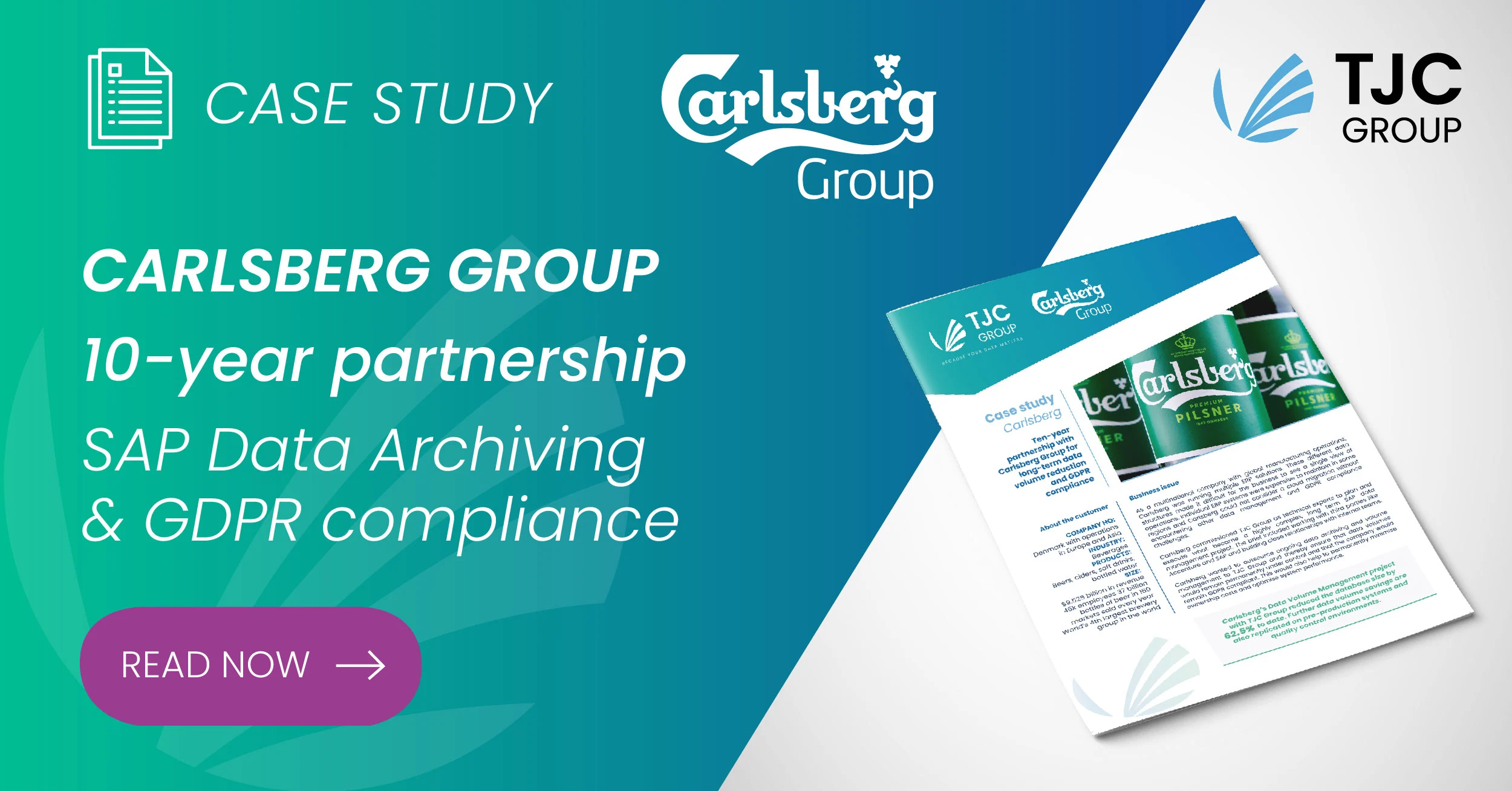
4.2 Fonctionnement détaillé du processus de gestion des rétentions
Lors de la gestion de la rétention, des fichiers d’archives sont créés, mais l’objectif est de maintenir la confidentialité des données à des fins de RGPD. Il s’agit d’un processus plus complexe que l’archivage classique, car les règles de conservation varient selon les types de données et les pays ont également défini des périodes de conservation des données différentes, mais les principes sont similaires. Lorsque les fichiers d’archives RGPD sont créés, il faut spécifier une période de conservation déterminée, qui répond aux réglementations exactes. De nombreuses organisations se retrouvent dans l’impasse parce qu’elles établissent une période de conservation universelle et longue, par exemple 99 ans, alors que les règles de l’industrie imposent une période beaucoup plus courte.
En tant qu’outil d’archivage, SAP ILM est utilisé pour créer un fichier d’archive et le bloquer si nécessaire pour respecter les lois sur la confidentialité des données. Enfin, une fois la période de conservation atteinte, les données sont définitivement supprimées. Pour obtenir des gains supplémentaires, le Cockpit des sessions d’archivage pour ILM peut automatiser l’ensemble du processus, ce qui porte les avantages potentiels à un autre niveau.
5. Mise hors service du système
Le décommissionnementt le processus de mise hors service d’un système SAP ou non SAP qui n’est plus nécessaire. Il s’agit d’un processus plus complexe et potentiellement plus long que l’archivage ou la gestion de la conservation des données, car il implique la mise hors service de l’ensemble d’un système obsolète, et pas seulement d’un sous-ensemble de données. Le décommissionnement des systèmes legacy nécessite une planification et une coordination minutieuses. Cela permet de s’assurer que les données souhaitées sont migrées vers le nouveau système (qu’il s’agisse de SAP S/4HANA ou de tout autre système ERP) ou archivées correctement, et que le système mis hors service est arrêté et éliminé en toute sécurité.
L’accès aux données historiques est une considération importante pour se conformer aux exigences fiscales et d’audit. Lorsqu’un système ERP est décommissionné, toutes les données et tous les documents associés à ce système doivent être accessibles soit via le nouveau système SAP S/4HANA, soit via une application de système legacy, comme ELSA de TJC Group. Abréviation de Enterprise Legacy System Application, ELSA gère les données historiques de manière exhaustive, en veillant à ce que toutes les informations pertinentes soient préservées et intégrées efficacement dans les nouveaux systèmes. Il s’agit d’une application en nuage construite sur la SAP Business Technology Platform (SAP BTP) qui peut être interconnectée à tous les systèmes de votre paysage informatique. ELSA devient l’endroit idéal pour stocker toutes vos données historiques, qui seront disponibles ultérieurement pour alimenter les modèles de données, dans le cadre de la stratégie d’IA de l’organisation.
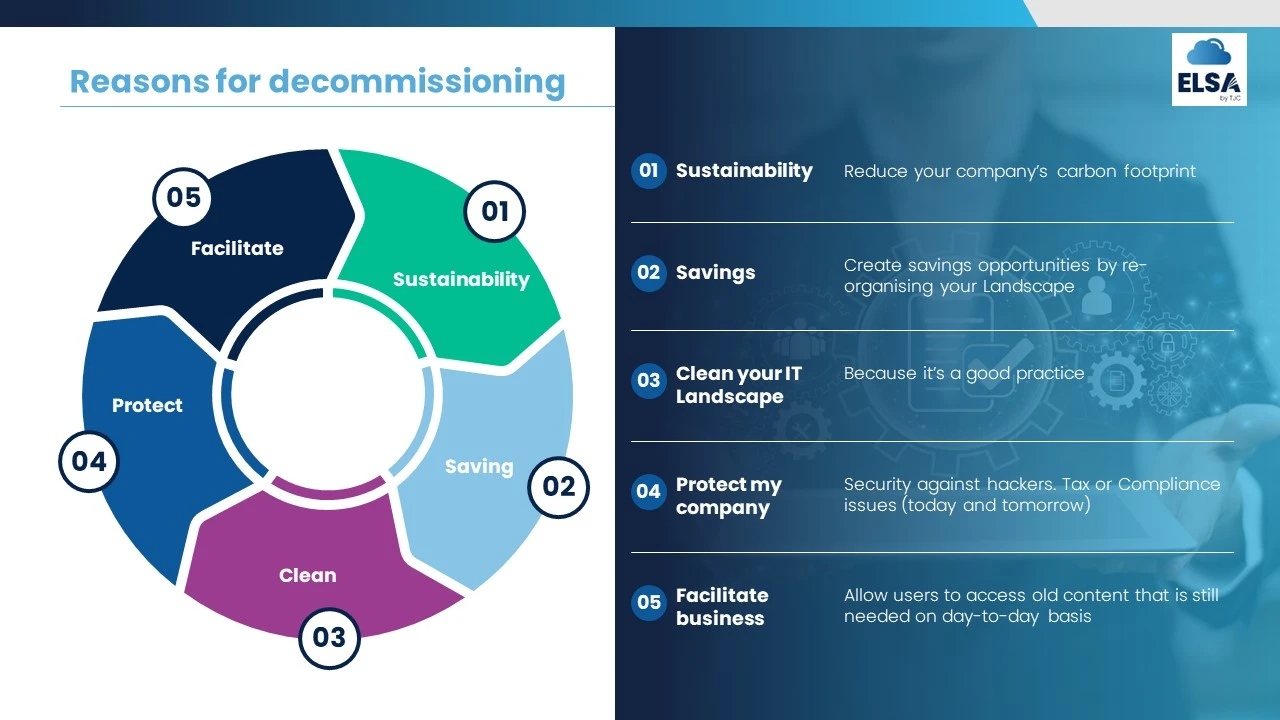
5.1 Considérations importantes pour le décommissionnement des systèmes legacy
- Lors du décommissionnement, il est essentiel de pouvoir fournir une piste d’audit et de prouver que les données extraites proviennent de l’ERP historique. Les auditeurs et les régulateurs voudront savoir où les données ont été collectées pour la première fois et être en mesure de prouver qu’elles proviennent du système juridique d’origine.
- Si vous envisagez d’utiliser une machine virtuelle pour geler les données, prenez garde, car cette solution comporte des risques élevés en matière de sécurité et de conformité. Cette solution peut sembler la plus simple et la plus facile à mettre en œuvre, mais elle peut s’avérer être le contraire. Avec une machine virtuelle, seule une copie du système de production est disponible, mais il n’y a pas d’environnement d’assurance qualité, et il n’y a pas non plus de mises à niveau de la sécurité ou de fonctions de confidentialité des données. Les données héritées sont toujours pertinentes et nécessaires pour de multiples raisons (conformité, rapports d’audit, rapports commerciaux, etc.) Envoyer des requêtes régulières à une machine virtuelle n’est pas une bonne pratique ; cela mettrait en péril le système principal. Vous pouvez en savoir plus à ce sujet dans cet article : Machines virtuelles pour le décommissionnement des systèmes : bon ou mauvais ?
- L’option la plus sûre consiste à centraliser tous les systèmes legacy dans une seule plateforme de gestion des applications patrimoniales qui donne accès aux données anciennes(documents, rapports, etc.). De cette manière, les besoins de l’entreprise en matière d’audit, de fiscalité, de conformité et de sécurité seront satisfaits.
- Dans certains cas, les utilisateurs de SAP ne sont pas en mesure de dire quelles données seront nécessaires à l’avenir. C’est difficile à dire, personne n’a de boule de cristal. Notre meilleur conseil dans de telles situations serait d’extraire l’ensemble de la base de données à décommissionner sous forme de fichier plat, de le stocker dans l’option de stockage de votre choix (stockage blob, stockage fichier…) et d’autoriser l’accès aux données via l’application ELSA.
- Le décommissionnement des systèmes legacy avec ELSA de TJC Group conduit à une voie plus respectueuse de l’environnement en ce qui concerne l’accès aux données. Le stockage des données existantes dans des fichiers plats et en dehors de la base de données principale permet de réduire les coûts de stockage au minimum. L’accès est assuré par une plate-forme unique (ELSA) qui fait l’objet d’un contrat unique ; par conséquent, les coûts fixes sont moins élevés.
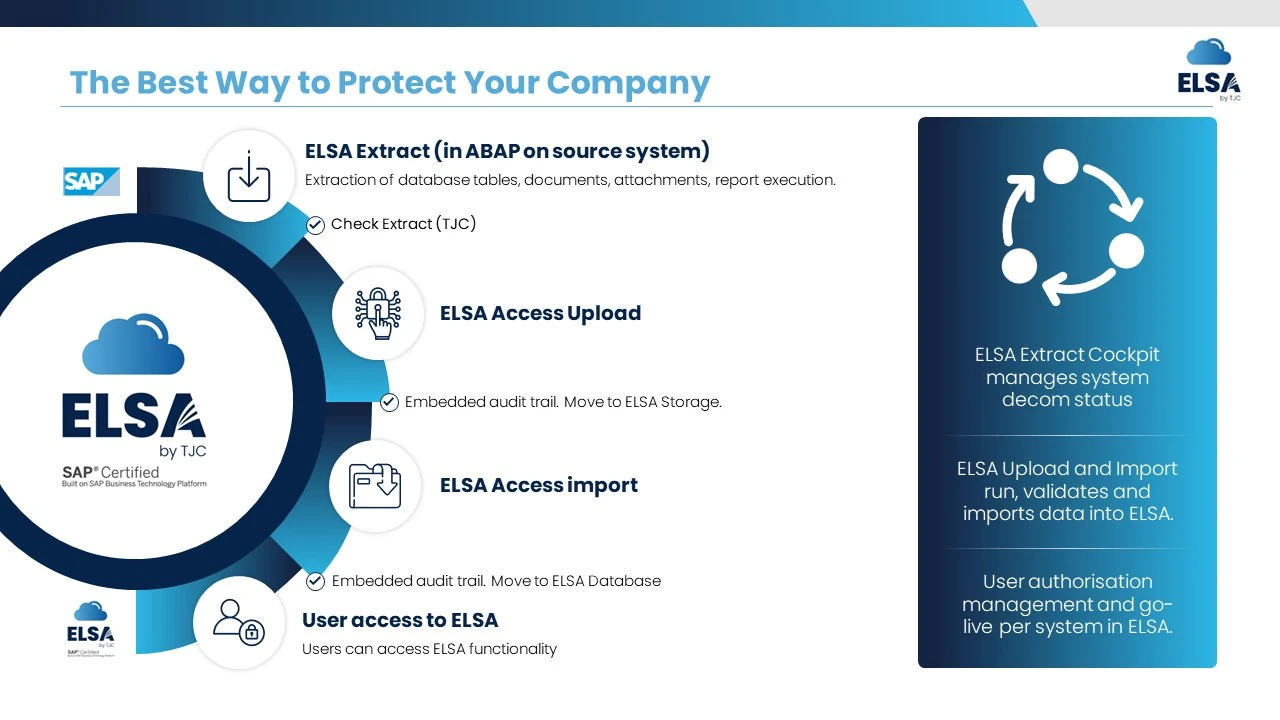
Cet article pourrait vous intéresser : Atteignez vos objectifs de durabilité en décommissionnant des systèmes legacy.
6. Transformation du paysage
Une fois le système legacy décommissionné, certaines organisations vont plus loin et procèdent à une “harmonisation du paysage”. Il s’agit de consolider toutes les applications historiques en une seule application de système patrimonial (LSA). Les systèmes de CRM et de gestion des ressources humaines, les logiciels de comptabilité et tous les autres anciens systèmes déployés sur le site sont regroupés dans une seule base de données afin de simplifier le paysage informatique. Stockez toutes vos applications historiques dans un système sécurisé et accédez de nouveau à toutes ces applications avec ELSA.
7. Conclusion
En résumé, l’archivage des données SAP, la gestion de la conservation, le décommissionnement des systèmes et l’harmonisation des paysages sont des processus importants qui aident les entreprises à gérer leurs systèmes SAP et leurs applications non SAP au fil du temps.
L’archivage des données permet de gérer la croissance de la base de données SAP, la gestion de la conservation des données permet de respecter la confidentialité des données, tandis que le décommissionnment permet de mettre hors service, en toute sécurité, un système SAP complet (ou tout autre système ERP) qui n’est plus nécessaire. La dernière étape du parcours de gestion des données consisterait à consolider votre paysage de systèmes legacy dans une application unique de systèmes legacy comme ELSA.
Vous trouverez de nombreuses autres informations sur la gestion des données dans les articles suivants :
- Regardez l’interview de Robert Holland, de SAPInsider, et de Thierry Julien, PDG de TJC Group, qui discutent des défis de la gestion des données dans les systèmes SAP : https://www.youtube.com/embed/wWXAtkQRGWE?autoplay=1
Contactez-nous dès aujourd’hui pour obtenir des conseils sur le décommissionnement d’un système legacy SAP ou non SAP.



